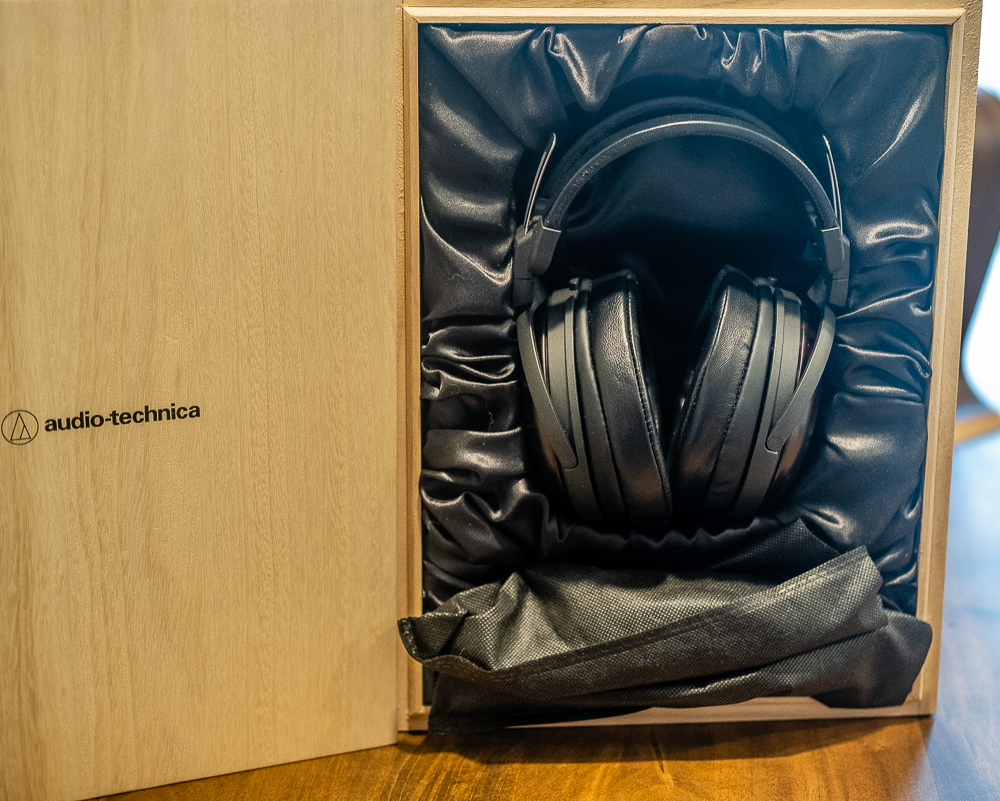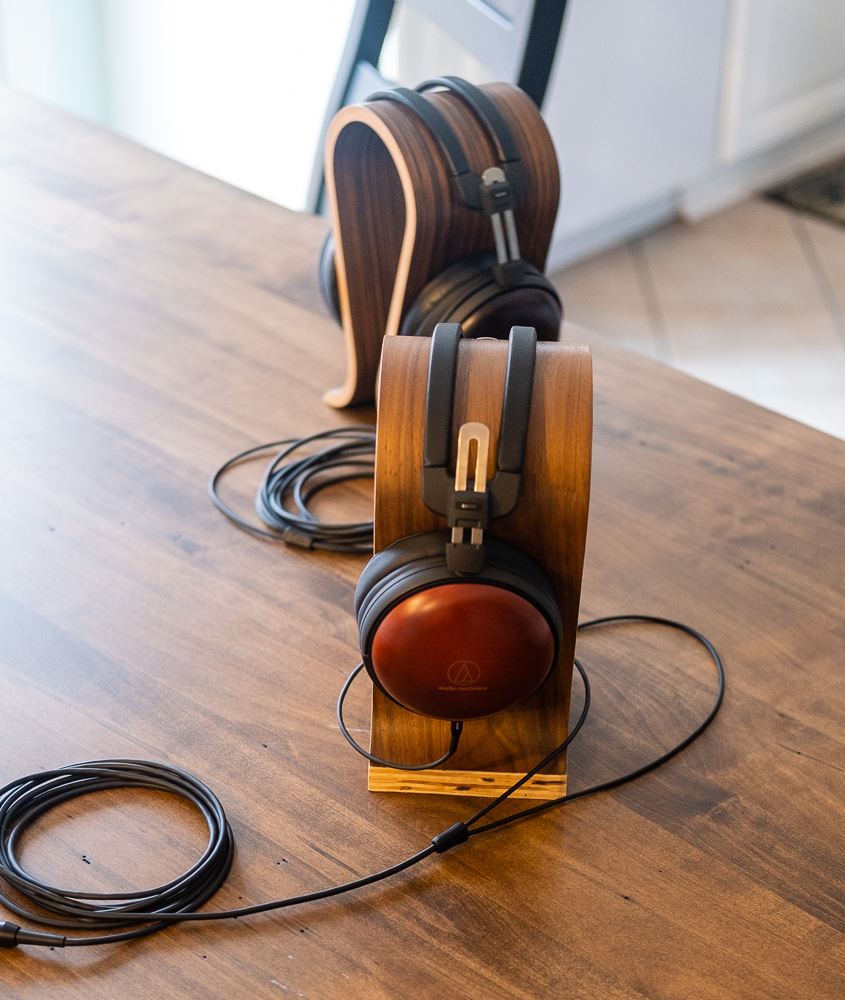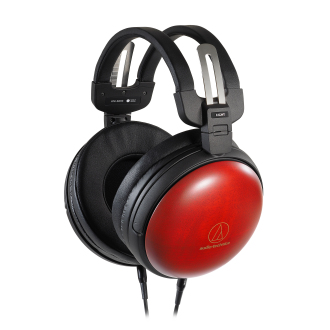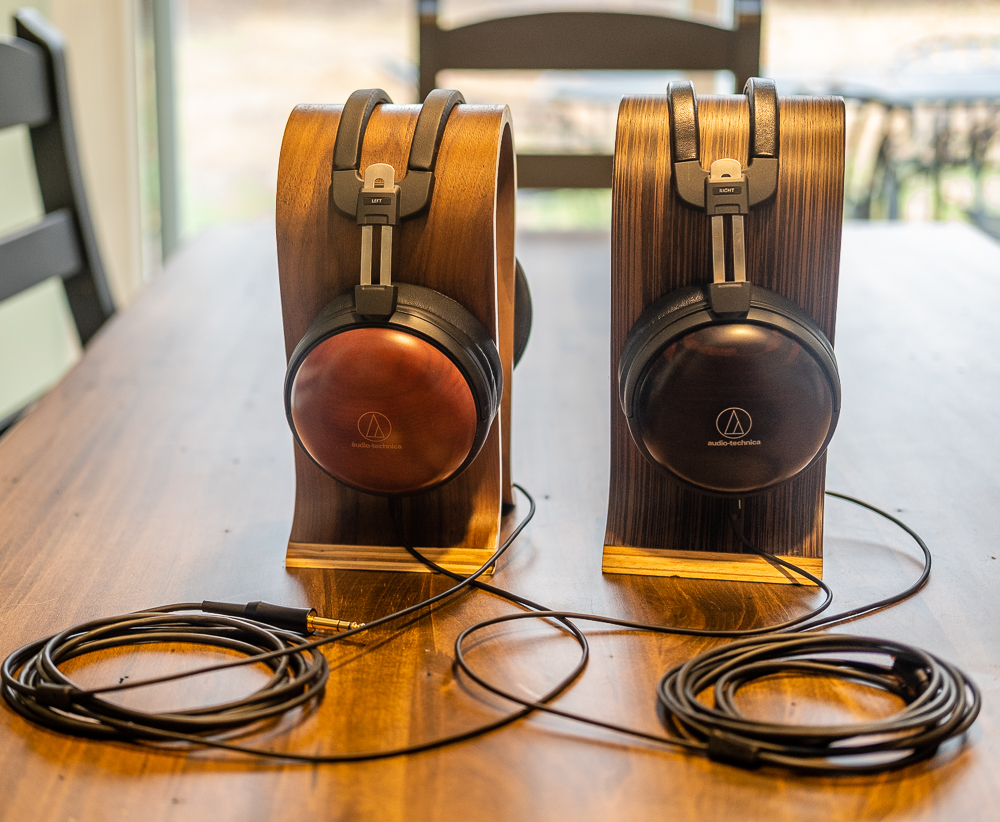Audio-Technica is known for building quality high-end audio products for both music lovers and audiophiles. The Japanese company takes pride in build quality headphones that offer the best sound possible in musical reproduction. The company has a reputation for building reference headphones with unique and often rare wood that is only available in Japan.
Past renditions included the limited edition 65th anniversary Cherry Wood headphones which now have a cult-like following within the personal audio community. The new designs being reviewed continue with the beautiful designs of rare wood being used in both reference models. The sound on both models is pure Audio-Technica filled with detail retrieval and offer wonderful musicality.
Built-in Japan by legendary AT craftsmen who take satisfaction in offering the world the best of Japan both in sound quality and design. Both models will be rolled out in the United States at the Consumer Electronics Show in January in Las Vegas.
ATH-AWKT Design
The Kokutan (Striped Ebony) woods used in the new reference closed design is derived from trees that take over 200 years to mature and are only located in Japan. The grain of this rare wood used for woodwind instruments and pianos has a tint of both back and brown and offers clear sound. They are hand-finished with a half-gloss that brings out the natural beauty of the wood’s grain.
The closed-back design uses a proprietary double air damping system that is patented by Audio-Technica. Its layered rings deliver a natural, transparent sound without any unwanted resonance noticeable during listening sessions. The design has detachable A2DC (Audio Designed Detachable Coaxial) connectors making it easy to swap out cables to use it with an RCA or XLR connection.

Using the balanced connection increases channel separation and the cables are manufactured with OFC wire, known for its high copper purity, offering exceptional sound. The 6.3MM plug is standard and the 3 Meter cables are great for most listening sessions.
The earpads are high-quality sheepskins as is the adjustable headband. The 53 MM driver has an outstanding frequency response of 5 Hz – 45,000 Hz, while the 102 dB efficiency makes listening on any amplifier easy and provides compatibility as well for all portable music players.

The Magnesium alloy arm is made from lightweight materials which are durable and offers users the adjustments necessary for the tight closed seal that is important in a closed-back design. The 48-ohm impedance is great for both solid-state amplification and also for tube amplifiers with a coupled transformer.
The Experience
Using both solid-state amplifiers and my reference tube amplifiers in my listening session I streamed music using my Roon library which includes selections from both Tidal and Qobuz. During my audition, listening to various music genres ranging from classical, jazz and popular music, I was able to get a feel for the design.
Closed-back headphones are difficult to get the best soundstage from and Audio-Technica is one of the best at offering quality headphones in closed designs that are comfortable and offer no compromises in musicality.
Using the Mytek Brooklyn Bridge which is a high-resolution solid-state amplifier for headphones that includes a world-class streamer and DAC that can play DSD, MQA, and PCM files up to 24/384 kHz. The ESS reference DAC used in the Mytek is exceptionally transparent and is able to get the most in detail retrieval from various recordings delivering exceptional musicality.
The ATH-AWKT, while listening to large scale classical recordings from my Roon Library such as the new “Beethoven Piano Concerto 1-5” with the Berliner Philharmoniker, I noticed provided an incredible and exciting soundstage. The sound was wide and deep. I could visualize proper layering in the orchestra, and the sound was exceptional without ever sounding restricted.
The pads were soft on my head and the headphone was light and noticeable on the recording was inner detail and the beauty of the piano body with excellent inner detail retrieval. The sound was exceptional, and when I switched from the Mytek to the Auris Headonia, I noticed even more musicality coming from the body of instruments.
The Mytek was exceptional but the Headonia was able to dig deeper, while both offered exceptional tonality of the piano and layering was exceptional with both amplifiers. The Auris, with the Marantz SA10, was three times more than the Mytek but differences were noticeable from the Mytek Brooklyn Bridge. I continued to be impressed with the AWKT’s ability to let me notice differences but still, both of the Amplifier/DAC combinations sounded exceptional.
Bass reproduction on the AWKT was good and offered excellent texture while digging into instruments with bass and the AT always felt balanced in the presentation. The sound was transparent and a little more on the bright side than the less expensive sister the ATH-AWAS which had a tendency to be more of a warmer sound both musical but with different sound signatures.
“Ella Fitzgerald Sings the Cole Porter Songbook” is an MQA recording on Tidal and the Mytek immediately recognized the recording which is a 24/96 kHz recording. The sound from Ella’s vocal was exceptional with clarity and great articulation in her vocal delivery. The reference AWKT sounded alive with musicality and made Ella’s vocal come to life.
I continued listening to the entire album and her vocal was stunning and alive and made me fall in love with her ability to get the most from a song. The AWKT had musicality and while the sound was bright, many would say it is transparent and has clarity and able to recreate every part of the performances articulately.
Billie Eilish the new teen sensation singing “Bad Guys” showcased the AWKT’s bass with texture and the clarity and articulation of Billie’s vocal and phrasing all sounded so alive and articulate, with her unique noticeable delivery. The electronic tones of the tune were exceptionally recorded and the new teen sensation sounded exceptional and the AWKT captured a memorable performance with its excellent hard-hitting bass and transparency that made Billie’s performance memorable.
The AWKT was able to sound transparent and the soundscape was more on the bright side than with other closed designs but always musical. The midrange was vivid and had excellent detail retrieval without ever sounding harsh. The Ebony wood cups eliminated any resonances in the performances and the sound and tonality of instruments were exceptional.
The fit of the reference model was comfortable with the sheepskin pads and the adjustability and light weight of the headphones made for comfortable long listening sessions without fatigue.
ATH-AWAS
The wood used for the ATH-AWAS is Asada Zekura, a rare traditional Japanese Cherry wood grown over 100 years to maturity. The wood is renowned for use usually in high-end speakers and known for its excellent acoustics. The striking wood provides for a reddish housing and each pair is unique and acoustically superior to many other designs because of the tonality of the wood.
The headphones were designed to be a well balanced musical instrument. The AT double air damping system is used in the design and they also have a detachable cable for aftermarket enthusiasts to use their favorite cable brands. Standard is a 3-meter length with a 6.3 plug and they also come standard with an additional XLR 3-meter cable.
Using synthetic leather earpads and headband helped to lower the price and make it more affordable over the AWHT flagship. The 53MM driver had a frequency response from 5 Hz – 42000 Hz and has a 40 ohm efficient easy to drive impedance.
Priced at $1399, the ATH-AWAS is warmer sounding than the flagship ATH-AWKT and gives up little in sound quality at a more affordable price than the flagship model.

The attractive red wood casing had a warmer acoustic sound than the flagship model. Using the same music to compare both headphones I was impressed with the sound quality. I found myself listening for hours on end when I switched to the ATH-AWAS.
The sound was exceptional with excellent bass and the terrific soundstage was wide and deep much like an open design with excellent transparency. The unique Asada Zakura wood was beautiful to look at and nailed the instrument tonality. The inner body of the piano has excellent decay and the notes were beautifully reproduced. The sound was inviting yet the musicality was exceptional and the AWAS performance was not only addicting but it took me into a journey of musicality not found much in any headphone let alone one priced this reasonably.
The midrange was exceptional with excellent clarity in vocals. I could hear excellent extension in bass recordings and with good texture, the bass had an excellent deep bass extension.

The treble also had excellent extension and never sounded harsh or bright. The shimmering sound of horn instruments were all portrayed with excellent tonality. Whether I was listening to large scale recordings or jazz combos the high-end capability and sound of the AWAS was satisfying and always sounded outstanding.
Final Thoughts
The two new closed models from Audio-Technica continue the Japanese company’s tradition of offering outstanding and beautifully crafted musical instruments. The wood used on both models is exceptional and both have different sound signatures.
The flagship model will satisfy the listener looking for detail retrieval and a brighter presentation, who will be rewarded with the ATH-AWKT’s ability to dig deep into recordings and get the most information out of the recordings allowing you to hear detail. Its brighter sound showcased more transparency and when paired with the Auris tube amplifiers sounded vibrant and alive without ever being strident or nonmusical. The Ebony wood is beautiful to look at and offers the same craftmanship that Audio-Technica is known for producing,
Both models are exceptional but for me, my preference was the musical delivery of the Asadz Zakura ATH-AWAS. I preferred the warmer presentation which to my ears was more musical. Giving up detail retrieval to the ATH-AWKT was made up for in tonality of instruments and a sound more of what I hear in live concert halls.
The two new closed models from AT are welcomed. The sound from both models is exceptional and the beauty of the designs with rare wood is welcomed. Made in Japan and built for a lifetime of use these two new models need to be heard to be appreciated.
The two new designs are sure to be big hits for people looking for the best in music reproduction from fine closed musical instruments and who need to audition both of these models. Exceptional products at a fair price built for music lovers and both models are beautiful to look at and exciting to listen to. If you’re into detail retrieval the ATH-AWKT ($1899) will deliver the transparency and sound you looking for, if you like musicality and a warmer presentation the ATH-AWAS priced at $1399 is your ticket.















Reply
Reply
Want to join discussion?
Feel free to contribute!